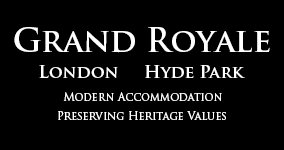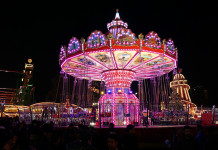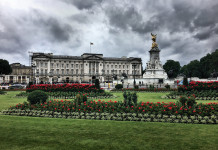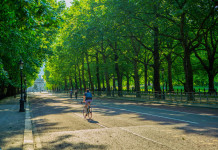There are few figures so intimately associated with the British character both within the UK and without than Winston Churchill, the Prime Minister who guided the nation (and, in part, much of the world) to very hard-fought victory in the Second World War. Indeed, many visitors to the capital (wherever they may be staying; somewhere central like the Grand Royale London Hyde Park hotel or not) make time to discover sites in the city with strong connections to the legendary ‘V-signal’ saluter. So, which to make a beeline for…?
Churchill War Rooms
(Clive Steps, King Charles Street SW1A 2AQ)

Should you be planning a Churchillian pilgrimage in the capital then, frankly, you can’t afford to miss this venue off your list; located slap-bang in the middle of the city, so very easy to reach from any of the hotels near Queensway station. Not only does it comprise the subterranean warren of offices and rooms used (and, to an extent, lived in) by the wartime PM and his immediate staff and military associates during the most dangerous days of WWII, it also has a museum dedicated to the great man’s life and career attached. To wit, you’ll be able to see for your own eyes Churchill’s own office (featuring the red telephone on which he regularly spoke to then US President Franklin D Roosevelt) and living quarters, the iconic Map Room (from which the war effort was essentially directed), as well as spaces where personnel worked on communications and typed, cooked, ate and slept. Meanwhile, the museum’s where you’ll find a good number of personal artefacts once owned by the PM, including clothing, military uniforms, cigars and love-letters written to his wife, Clementine.
Houses of Parliament
(Palace of Westminster SW1A 0AA)

Strictly speaking, of course, the Houses of Parliament are as important a general historical and modern site in London as they are as anywhere you may take in for a Churchill connection. And yet, of anywhere you might visit in the city, they’re rather essential when it comes to all things Winston; given it was in the House of Commons who sat for many years as a Member or Parliament (MP) and made some of his most legendary wartime speeches as PM – and it was in the ornate Westminster Hall that his body lay in state for three days following his death in January 1965, ahead of his impending funeral. In actual fact, there’s a specific feature of the building that owes its existence to Churchill; namely the Churchill Arch, as it’s known, an archway entrance to the Commons that was rebuilt (using stone from the original archway bombed during WWII’s London Blitz, at the PM’s suggestion, to suggest democratic continuity and strength in the face of what the chamber and the nation at large had been through during the war). Next to the arch, fittingly, stands a large bronze Churchill statue – there’s also one noticeably outside in Parliament Square.
St Paul’s Cathedral
(St Paul’s Churchyard EC4M 8AD)

Essentially the ‘people’s church of London’ (distinguishing itself then from Westminster Abbey, the UK’s premier Anglican place of worship), St Paul’s lies in the heart of the ‘Square Mile’ in the east of Central London and was built from Sir Christopher Wren’s revolutionary Restoration era design following the devastating Great Fire of London of 1666. Again then, with its utterly iconic domed crypt, ‘Whispering Gallery’ (with extraordinary acoustics) and crypt (where you’ll find the tomb of the Duke of Wellington, no less), this cathedral is a destination any visitor who’s mindful of London’s history and culture ought to visit. However, it’s Churchill connection is special, indeed, if sombre; as it was the site at which his grand state funeral took place on 30th January 1965. It was an event attended by dignitaries from more than 100 different nations and various memorial plaques and screens can be found inside commemorating the event. And, lest we forget, it was also the one building that, during the Blitz, Churchill ordered London’s fire brigade to protect and preserve at all costs.








